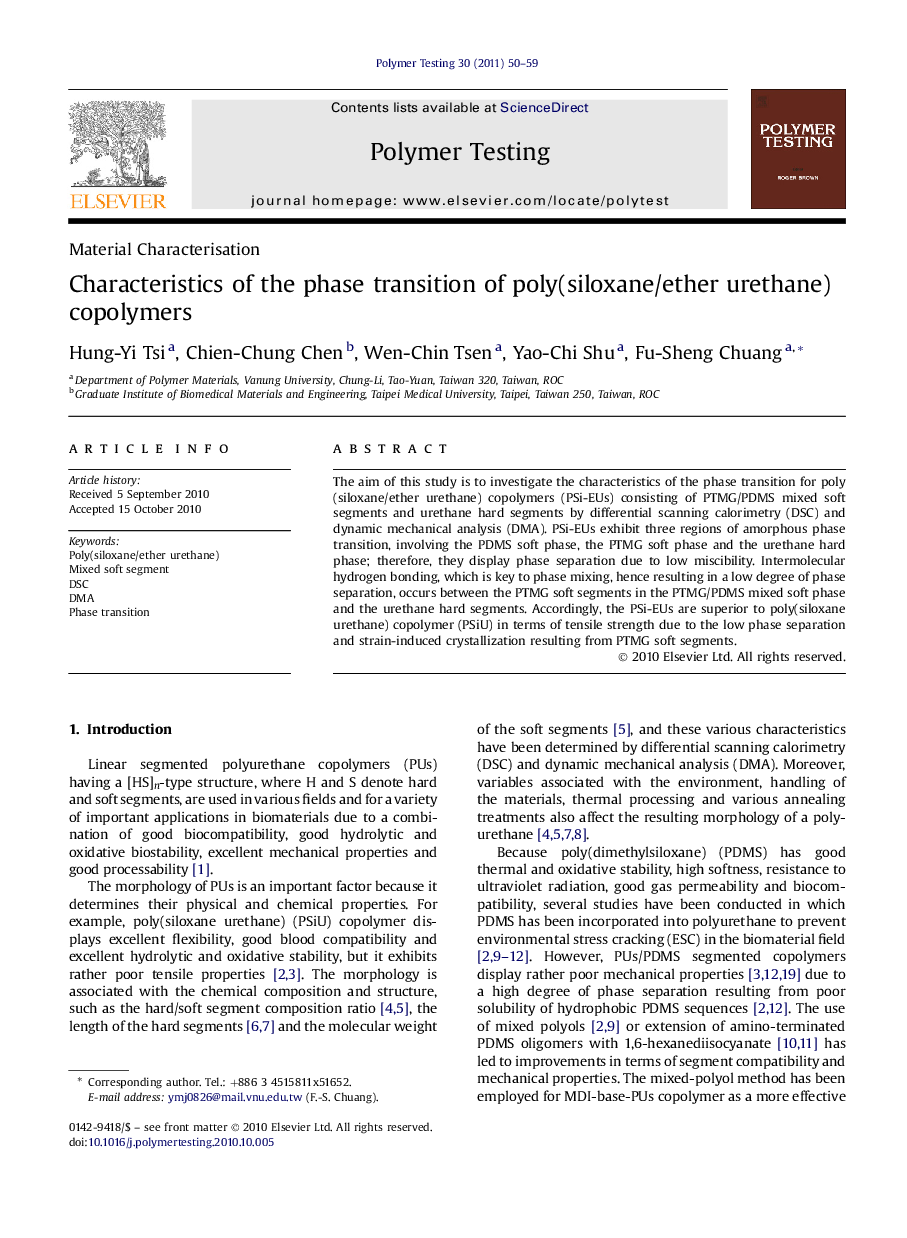| Article ID | Journal | Published Year | Pages | File Type |
|---|---|---|---|---|
| 5207114 | Polymer Testing | 2011 | 10 Pages |
Abstract
The aim of this study is to investigate the characteristics of the phase transition for poly(siloxane/ether urethane) copolymers (PSi-EUs) consisting of PTMG/PDMS mixed soft segments and urethane hard segments by differential scanning calorimetry (DSC) and dynamic mechanical analysis (DMA). PSi-EUs exhibit three regions of amorphous phase transition, involving the PDMS soft phase, the PTMG soft phase and the urethane hard phase; therefore, they display phase separation due to low miscibility. Intermolecular hydrogen bonding, which is key to phase mixing, hence resulting in a low degree of phase separation, occurs between the PTMG soft segments in the PTMG/PDMS mixed soft phase and the urethane hard segments. Accordingly, the PSi-EUs are superior to poly(siloxane urethane) copolymer (PSiU) in terms of tensile strength due to the low phase separation and strain-induced crystallization resulting from PTMG soft segments.
Keywords
Related Topics
Physical Sciences and Engineering
Chemistry
Organic Chemistry
Authors
Hung-Yi Tsi, Chien-Chung Chen, Wen-Chin Tsen, Yao-Chi Shu, Fu-Sheng Chuang,
